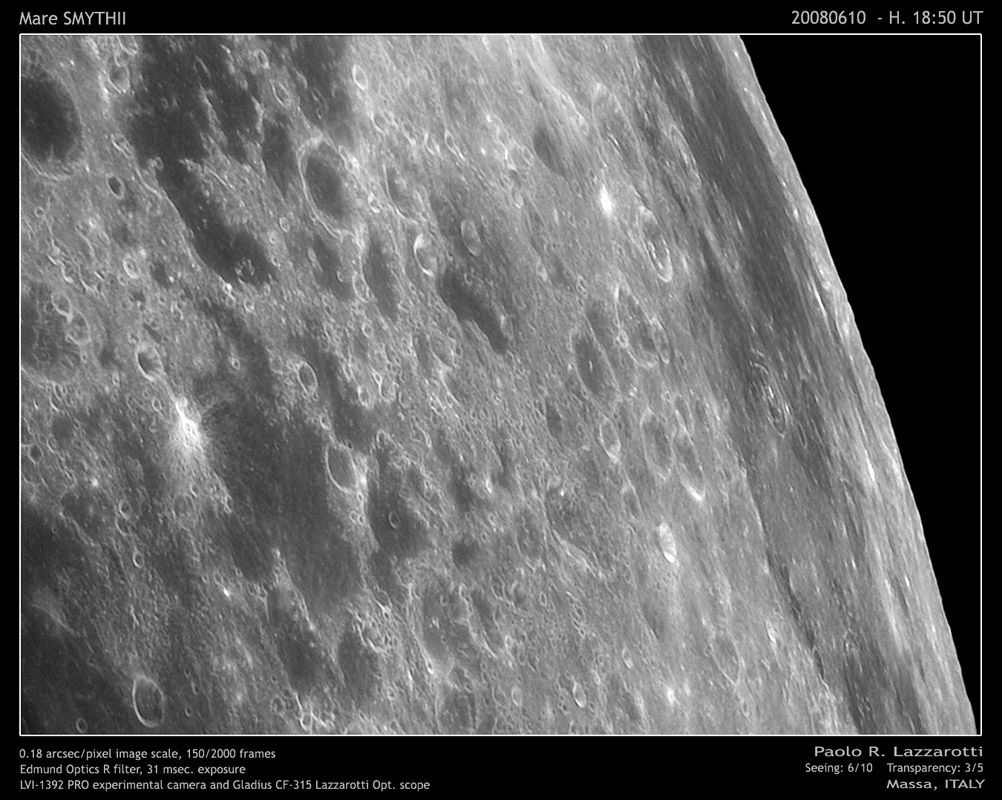November 3, 2008
What's New?

image by Paolo Lazzarotti, Italy
The rate of formation of impact craters was vastly higher in the first 500 million years of lunar history than since then. The early extreme cratering represented the end of accretion that formed the Moon and planets by sweeping up all the planetesimal chunks of material from the birth of the solar system. The cratering rapidly declined so that for the last billion years or so it has been about the same as today. We can use the existence of crater rays and bright halos to identify young craters - typically those less than a billion years old. They should be uniformly distributed around the Moon since there have been no recent lava flows or impact basin rain of ejecta to erase them preferentially. But are they? A long time ago when I was young enough to be another person I did a quick study of the distribution of young nearside craters and thought they were random in their locations on the Moon. But when I look at the farside I get the impression that there are more large young craters there than on the nearside, and when I see images such as this one by Paolo I wonder about nearside randomness. This is a view of 30° of longitude from 60°E to the limbside of Mare Smythii at about 90°E. The crater Webb is a bottom left and Firmicus is at top left. There are no large fresh craters in this view and only a few small ones. Most conspicuous is a tiny ray crater near the left edge that is near the darkish Mare Spumans. A similar size bright crater is near Schubert at upper left. But it is very difficult to judge by eyeball if there is a lack of fresh craters. It is necessary to do a proper scientific investigation with similar quality data for all places examined. Of course we don't have that for the Moon. The Clementine images are great for looking for ray craters - at least near the equator, but at latitudes higher than 50° the lighting is too low to catch all the rayed craters. Two Japanese scientists examined 222 ray craters with diameters larger than 5 km between 43°N and 42°S on mostly farside Clementine images. They discovered that there are 1.5 times as many ray craters on the leading side of the Moon than on its trailing side. Leading refers to the side that faces in the direction of the Moon's motion around Earth. Thus my original assumption that craters should be randomly distributed was not correct, but this reported leading/trailing asymmetry may not be real since about half the Moon's circumference was not examined. Easy questions sometime become complex.
Chuck Wood
Technical Details
see image
Related Links
Rükl plate 38
Paolo’s website
An earlier view
Yesterday's LPOD: A Wallfull of Rükl
Tomorrow's LPOD: Unequal Twins
COMMENTS?
Register, Log in, and join in the comments.



